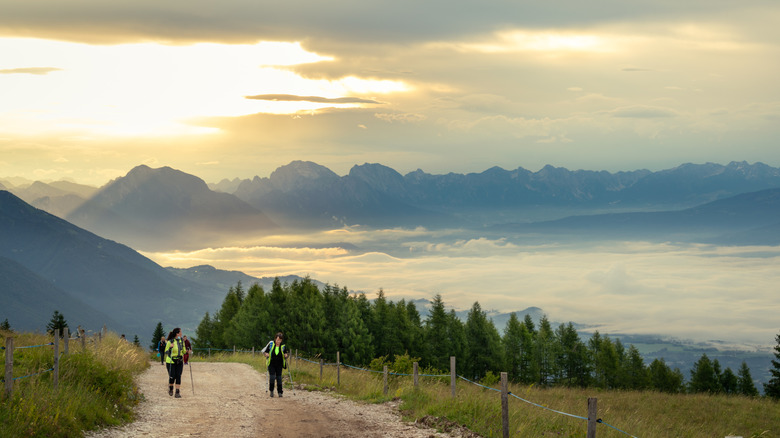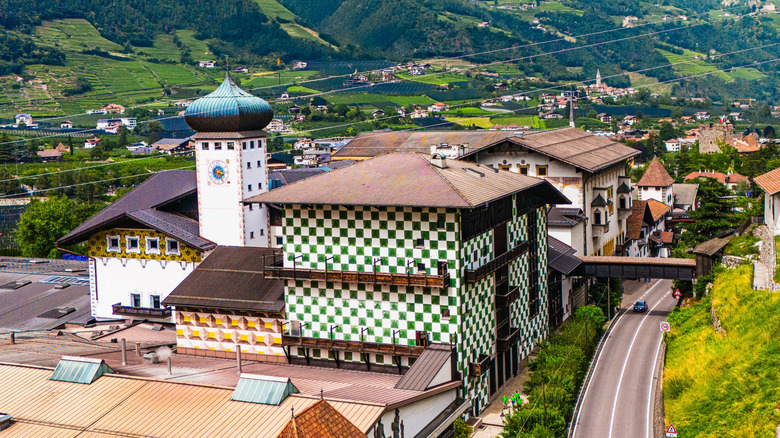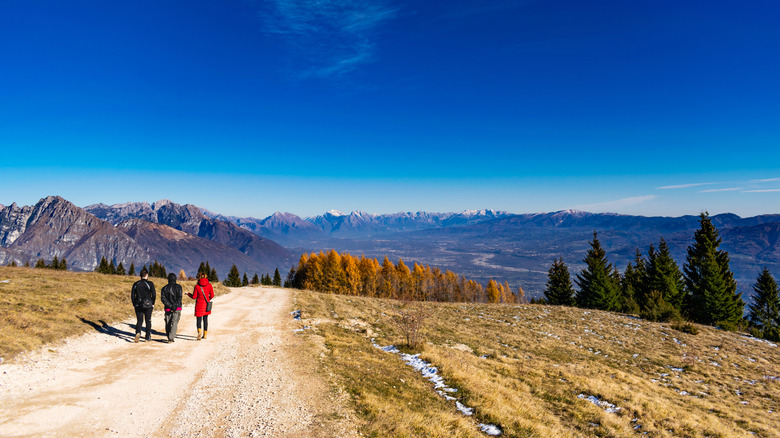A Scenic Hiking Trail Invites 'Slow Travel' To Untouristed Towns Hidden In The Italian Dolomites
In the era of over tourism, it can sometimes feel like there are vanishingly few places left to explore which haven't already seen more than their fair share of footfall over the years. However, for hikers ready to make the trip to Europe, there are new routes opening up in some of the continent's most scenic areas which give travelers the chance to enjoy Old World charm without the crowds. In the Italian dolomites, a 105-mile circuit called the Cammino Retico takes hikers through the regions Trentino-Alto Adige, far north at the country's mountainous land border and Veneto, the region to the east containing Verona and Venice to the south.
However, hikers of the Cammino Retico, which opens to travelers in 2024, won't find themselves among the crowds of Italian cities. Instead, the route takes you through 10 historic villages, giving you a glimpse of the area's past and of some of Italy's most outstanding natural beauty. With 50 places to stay along the route including inns and agritourism options — the farm stays for which Italy is famous – as well as the option of wild camping overnight along the route, the 7-day hike makes for an tranquil and less-populated alternative to the Iberian Peninsula's Camino de Santiago. For hikers in the know, the challenge now is to complete the Cammino Retico while it remains a best-kept secret.
Highlights of the Cammino Retico
The Cammino Retico translates as the "Rhaetian Way," and is designed to evoke the history of the ancient Rhaetian people who populated the Italian Dolomites before the advent of the Roman Empire. The starting point is the Pedavena Brewery in the village of Pedavena, after which you head west to Aune di Sovramonte. The route travels counterclockwise through Lamon and Castel Tesino to the east before the route takes you south, through Fonzaso and Arsiè, after which you will travel north east as far as Cesiomaggiore before the route turns you over the course of two days to Aune. Hikers will encounter at least one historic village a day on the route, allowing you to refuel, collect fresh water, and recuperate when needed.
Between the villages, the landscape is dominated by snow-capped mountains, ancient forests, and undulating plateaus, valleys, and lakes (be sure to bring your camera). Among the historical sights on offer are the thousand-year-old Basilica Santuario dei Ss. Vittore e Corona, a dazzling spiritual retreat at the foot of Monte Miesna and the beautiful walled castle town of Feltre whose stunning architecture has earned it the nickname "the vertical village." The route takes you up to an altitude of nearly 5,000 feet, guaranteeing some of the finest possessive views of the UNESCO-listed Dolomites.
Preparing for the Cammino Retico
Despite the Cammino Retico's emphasis on slow travel and sustainable tourism, undoubtedly international travelers, especially those coming all the way from the United States, will want to add other legs to their journey, including, most likely, the major tourist spots. Rome is a great place to start off an Italian vacation, thanks to its well-served international airport. For Cammino Retico travelers, it also makes sense to fly into Rome as in recent years a new tourist-focused train line has been opened between the capital and the Dolomites, meaning easy access to the start of the trail.
As tempting as it is to see the Cammino Retico as accomplishable by most people of moderate fitness, the official website cautions would-be travelers to prepare for the route with an intentional training plan to ensure you have the stamina to complete the 7-day hike, though you can also tackle the route non-consecutively. The official website suggests that the route can be taken any time of the year, with each season having its own particular benefits and drawbacks. Proper hiking equipment, including hiking shoes, socks, and breathable clothes are recommended, and planning your packing is encouraged. Would-be Cammino Retico hikers are asked to complete registration and buy a guide, which will keep you abreast of the route, water sources, and potential accommodation options.
Looking for another European challenge? Try this bucket list hike to Europe's highest active volcano.


